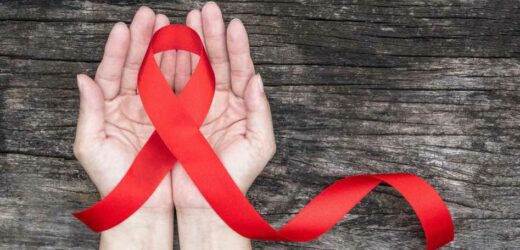A FIFTH person has been “cured” by HIV after battling the disease for 31 years.
The 66-year-old man said he is “beyond grateful” to the scientists that blasted the condition from his body.
He has been nicknamed the “City of Hope” patient, after the Californian hospital where he was treated, and has decided to stay anonymous.
Others cured of HIV include the Berlin, London, New York and Düsseldorf patients, of which only the former two have been identified.
The City of Hope patient had HIV for 31 years, longer than any previous patient who went into remission.
He had suffered a stage of AIDS, which tragically took many of his friends in the 80s.
Read more on viruses
Men at risk of monkeypox should ‘reduce sexual partners,’ WHO chief advises
New Omicron sub-variant now dominant in UK as cases rise 10%
He said in a statement: "When I was diagnosed with HIV in 1988, like many others, I thought it was a death sentence.
"I never thought I would live to see the day that I no longer have HIV.
"I am beyond grateful."
Although the groundbreaking science offers hope for a future without HIV, sadly a “cure” is not yet available for the millions with the condition.
Most read in Health
GOLDEN EYE Barmaid swaps false eye for sparkly gold version after cruel punters' comments
Eating popular snacks drastically increases your risk of top killer
I’m sharing a photo of my girl to warn parents never ignore a kid playing up
Roman Kemp wears oxygen mask as he deals with debilitating condition
So far, those who have been freed from their disease also had cancer.
Their treatment involved a bone marrow transplant, which also beat HIV.
It would be too dangerous to give people with HIV a bone or stem cell transplant – a last option in the treatment of cancer with several risks.
How he was treated
The latest patient received a stem cell transplant for leukaemia, researchers reported on Wednesday.
Doctors who presented the data ahead of the International Aids Society's (IAS) 2022 meeting said the man had been taking antiretroviral therapy (ART) for 30 years.
ART suppresses HIV from replicating in the body and allows those with it to live a normal and healthy life.
After the transplant three and a half years ago, which followed chemotherapy, the City of Hope patient stopped taking ART in March 2021.
He has now been in remission from both HIV and leukaemia for more than a year, the team said.
Describing a cure as the "holy grail", Prof Sharon Lewin, president-elect of the IAS, said the case provided "continued hope … and inspiration" for people with HIV and the wider scientific community.
But Prof Steven Deeks, an HIV expert at the University of California, San Francisco who was not involved in the research, said the "first thing you do in a bone marrow transplant is you destroy your own immune system temporarily".
"You would never do this if you didn't have cancer," he said.
Growing hope
The treatment is thought to work because the donors of stem cells or bone marrow are naturally resistant to HIV due to having a rare genetic mutation.
Scientists believe the donors lack the receptors used by HIV to infect cells.
When these cells are injected into the body, they mature into a new and healthy immune system, replacing the damaged cells within the body.
Other patients have miraculously cleared their HIV infection naturally, and are known as “elite controllers”.
Making up just 0.5 per cent of those who have HIV, experts describe elite controllers as people who somehow tame the virus without any aid at all, having undetectable levels of HIV in the blood.
Two that have been described by medics are an anonymous 30-year-old woman nicknamed the “Esperanza patient”, from Argentina, and Loreen Willenberg, otherwise known as the “San Francisco patient”.
On Wednesday, researchers in Spain revealed another 59-year-old woman in this category.
She has maintained an undetectable viral load for 15 years despite stopping ART.
Despite promising individual stories, a report warned that progress against HIV has stalled due to the Covid pandemic.
The U.N. set a goal of fewer than 370,000 new HIV infections by 2025.
Last year, there were about 1.5 million, and 650,000 people died of AIDS – a life-threatening complication of HIV.
Read More on The Sun
Five million people still waiting for free cost of living payments
I live on the world’s biggest cruise ship but my cabin’s SO tiny
New HIV infections fell just 3.6 per cent between 2020 and 2021, the smallest annual drop since 2016, said the UNAIDS report.
UNAIDS executive director Winnie Byanyima said: "The response to the AIDS pandemic has been derailed by global crises from the colliding pandemics of HIV and Covid, to the war in Ukraine and the resulting global economic crisis.”
Source: Read Full Article











